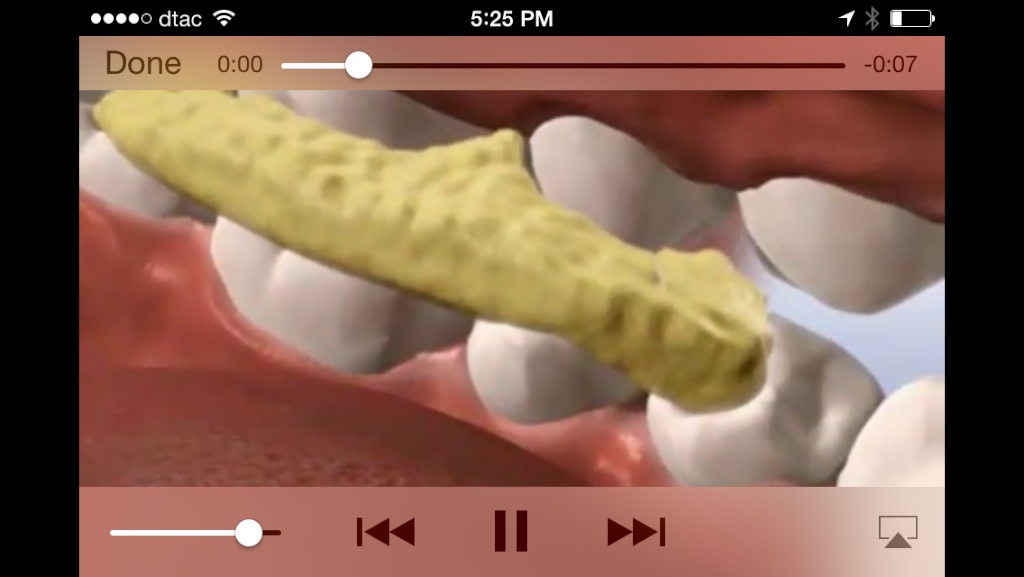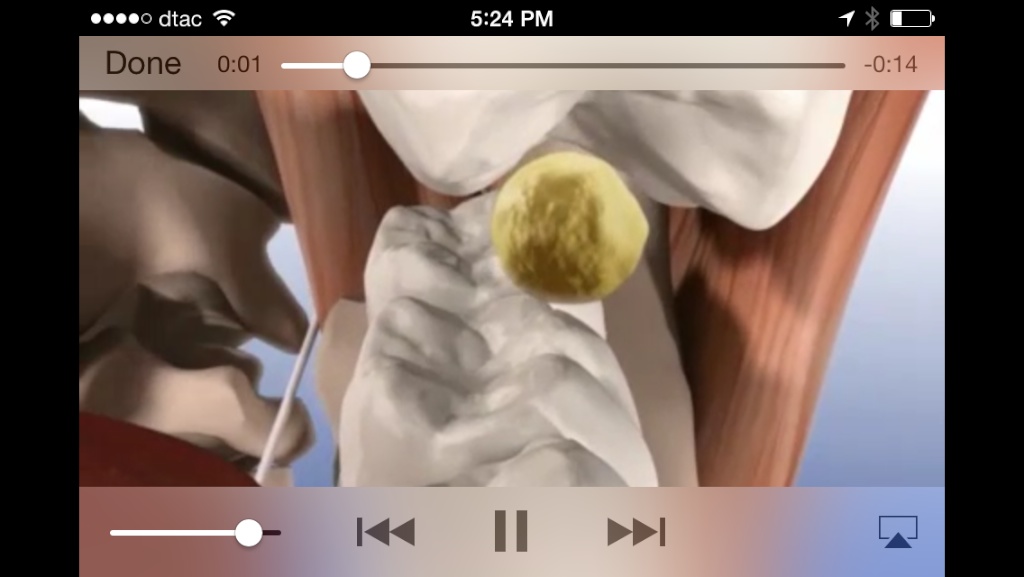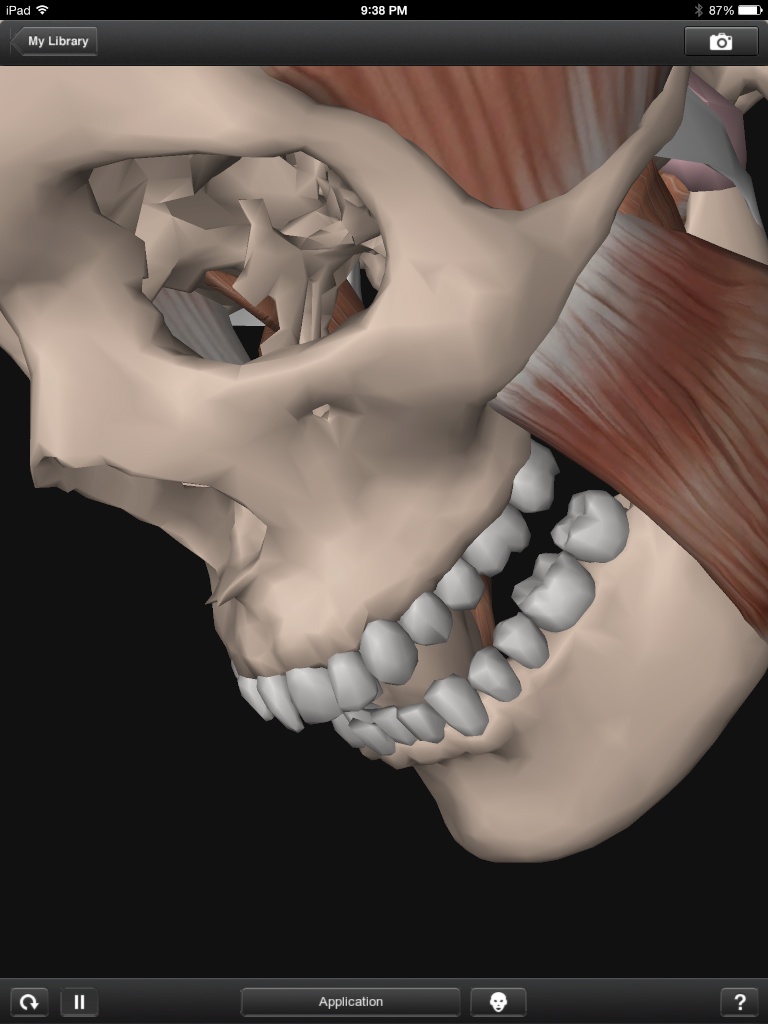Dental Navi and Dental Navigator: Similar Demonstration Apps for iPhone and iPad

AMITIAE - Tuesday 4 February 2014
|
Dental Navi and Dental Navigator: Similar Demonstration Apps for iPhone and iPad |
 |
|
|
By Graham K. Rogers
This app is a 3D dental simulator originally developed for the iPad, but now also available for the iPhone as well and called DentalNavi. The two apps are similar but have different purposes. They operate differently and do not have the same in-app purchases available.

iPhone - Dental NaviAfter a screen that displays the app name, a user is presented with a list. At the top is a link to the iPad app, access to 3D videos of the head and jaw (3D Head, Chewing Animation, Chewing - Lingual, and Chewing - Distal). The first is displayed in portrait mode; the others in landscape.

There are also links to 5 in-app purchases: Implantology, Occlusion, Crown and Bridge, Endodontics and Fillings and Inlays/Overlays. Each of these is priced at $4.99 and provides a video of the process or technology.
iPad - Dental NavigatorWhile the opening screen of Dental Navigator (note the slightly different name) appears the same as for the iPhone app, the way that this app behaves on the iPad shows that the intent is completely different. This is clear when examining the list of in-app purchases and on opening the 3D Head link, which is not a video but an interactive display.As well as the link to the 3D head, the list links to the dental products from Bausch that are shown in the iPhone version, as well as 6 in-app purchases: videos and interactive displays. These are Implantology (video, $19.99), Jaw Movement (interactive, $9.99), Occlusion (videos, $19.99), Crown and Bridge ($19.99), Endodontics ($19.99) and Fillings and Inlays/Overlays ($19.99). The 3D head, accessed from that first page list, allows movement using the fingers (scrolling and pinch) and may be displayed either with or without the muscles. That is controlled by a Head icon in the bottom tool bar. Alongside this (and dominating the bar) is a button marked "Application". This reveals the three videos showing chewing that are also in the iPhone app. To the far left of the bottom toolbar is a circular arrow, to return the head to its start position. To the right of this is a video button that animates the jaw movement: the head is then rotated with gestures. A useful button at the top right, has a camera icon and allows the user to take a screen shot.

CommentsAs it stands, with no in-app purchases made, Dental Navigator has a moderately useful function as a basic display of the jaw movements. It is clear that any of the in-app purchases, each with their own specialist appeal, will be valuable to those in dentistry who may need to use one (or more) as part of a direct demonstration of a process. The obvious point here is to show a process to a patient.I did not download any of the in-app purchase packages which limits my full assessment of this app, but recognise that each of the modules is of a specialist nature. As dentistry itself is expensive, the prices may be justified. The higher prices for the iPad purchases (and the limited number offered on the iPhone) suggest that this is the preferred medium for demonstration, particularly in a surgery. However, there is also a clear teaching aspect here and as iOS devices are easy to connect to overhead displays, or to HDTVs, a larger classroom situation may also be envisaged by the developer. I often connect my devices (and the Mac) to the overhead projectors in classrooms for demonstration purposes as there is a more direct communication between what is being demonstrated and the student receiving the information.
Graham K. Rogers teaches at the Faculty of Engineering, Mahidol University in Thailand where he is also Assistant Dean. He wrote in the Bangkok Post, Database supplement on IT subjects. For the last seven years of Database he wrote a column on Apple and Macs. |
|

For further information, e-mail to

|

|